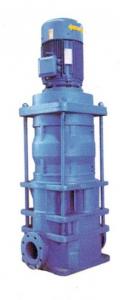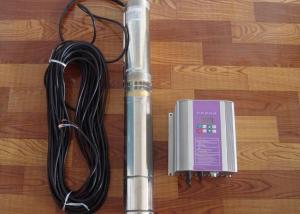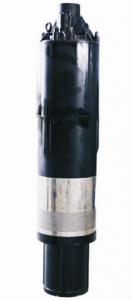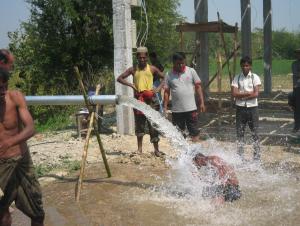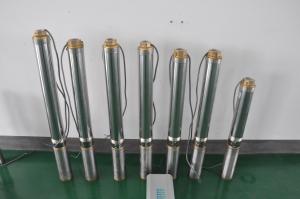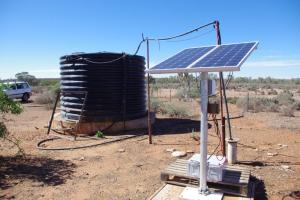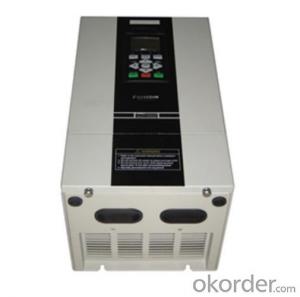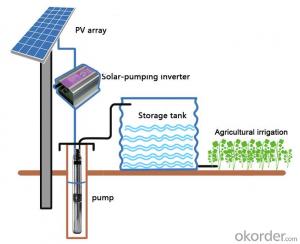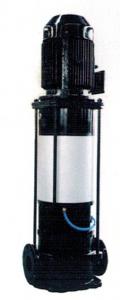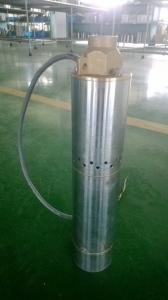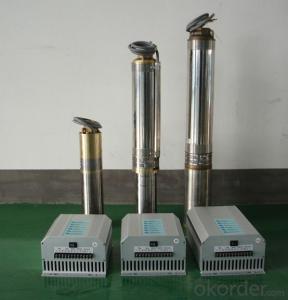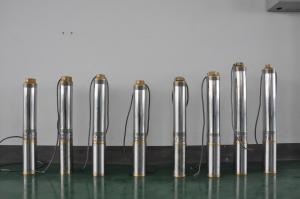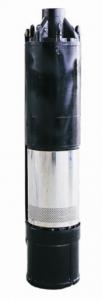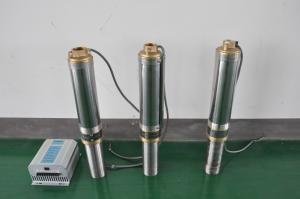Off Grid Solar Pump L3D-60-120
- Loading Port:
- China Main Port
- Payment Terms:
- TT OR LC
- Min Order Qty:
- -
- Supply Capability:
- 300 sets unit/month
OKorder Service Pledge
OKorder Financial Service
You Might Also Like
Product description:
Product: Solar water pump
Model:L3D-60-120
Appilication:
surface pump
for surface water of pond, river, lake
for irrigation of a big farm with 40000 m2 on the top of a mountain
Product specification:
flow rate:60m3/ hour, 420m3/day.
lift: 10m-120m
pump diameter: 610mm
Pump installed on the ground, outlet to the water surface:4m
with AC motor, motor power:22kW
but only need solar power:24kW(while Grundfos pump needs at least 45kW solar power, our pump can save more than 50% solar panel power,save USD15000 cost for solar panel per set.
Material:
Pump inside: stainless steel and wearable nylon,it enables our solar pump to have 10 years sevice life.
Motor : AC motor, 380V , three phase , 50Hz. The pump also can connect with grid power directly.
Certification:
3 International patent
ISO9001
CE
Warranty:2 years
- Q: Are there any limitations to using a solar pump?
- There exist certain constraints when using a solar pump. One primary constraint is the reliance of solar pumps on sunlight for their operation. This implies that their effectiveness and efficiency may be compromised on cloudy or rainy days, or in regions with limited sunlight. The performance of the pump is directly impacted by the amount of power generated by the solar panels, so insufficient sunlight may hinder optimal functioning. Another limitation pertains to the initial cost of installing a solar pump system. Although solar pumps can yield long-term savings by reducing electricity bills, the upfront expenses can be substantial. These costs encompass not only the pump itself, but also the solar panels, batteries, and other necessary components. Consequently, individuals or communities with limited financial resources may find them less accessible. Furthermore, adequate space is required for the installation of solar panels. The panels must be positioned in a manner that maximizes exposure to sunlight, necessitating a large open area or an unobstructed rooftop. In certain urban or densely populated areas, finding suitable space for solar panels can pose a challenge. Maintenance and repair also present a constraint. Regular maintenance is essential to ensure the efficient operation of solar pumps, involving tasks such as cleaning the solar panels, inspecting connections, and examining other components. In the event of a malfunction or breakage, finding specialized technicians or spare parts may prove more difficult compared to conventional pumps. Lastly, the capacity of solar pumps can be limited. They may not be suitable for applications with high water flow or pressure demands. Larger-scale agricultural or industrial operations might require more powerful pumps that solar energy alone cannot provide. Despite these limitations, solar pumps offer numerous advantages, including energy efficiency, environmental friendliness, and long-term cost savings. It is crucial to carefully evaluate the specific requirements and limitations of your situation before opting for a solar pump.
- Q: Are there any safety measures or precautions to consider when using a solar pump?
- When using a solar pump, it is important to consider various safety measures and precautions. These are: 1. Electrical Safety: Solar pumps have the potential to generate electricity, so it is crucial to adhere to electrical safety guidelines. Ensure that all wiring and connections are adequately insulated and protected from water or physical damage. Use a circuit breaker or disconnect switch to cut off power during maintenance or repairs. 2. Water Safety: When working with a solar pump that draws water from a well or pond, be cautious of possible water contamination. Utilize an appropriate filtration system to remove impurities and regularly clean and disinfect the water source. Additionally, make sure the pump is properly sealed to prevent water from entering critical components. 3. Overheating Prevention: Solar pumps rely on sunlight to generate power, and excessive heat can decrease their efficiency or cause damage. Install the pump in a shaded area or use a protective cover to shield it from direct sunlight, particularly during peak hours. Regularly check for signs of overheating, such as melted wires or burnt odors. 4. Maintenance and Inspection: Regular maintenance and inspections are vital to ensure the safe and efficient operation of a solar pump. Adhere to the manufacturer's guidelines for routine checks, cleaning, and lubrication. Inspect the pump's components, including panels, wiring, and valves, for any indications of wear or damage. Address any issues promptly to prevent further complications. 5. Installation and Mounting: When installing a solar pump, carefully follow the manufacturer's instructions and guidelines. Ensure that the pump is securely mounted to prevent accidental falls or damage. Use appropriate mounting brackets or structures that can withstand the weight and environmental conditions. 6. Training and Education: It is essential to have adequate knowledge and training regarding the operation of solar pumps. Understand the specific features, controls, and safety precautions of the pump. If necessary, seek professional assistance or training to ensure safe and effective usage. By adhering to these safety measures and precautions, users can minimize the risk of accidents, optimize the performance of their solar pump, and ensure its longevity.
- Q: Are there any special considerations for installing a solar pump in sandy or dusty environments?
- Installing a solar pump in sandy or dusty environments requires special considerations. Firstly, it is important to select a pump specifically designed for such conditions. These pumps come with dust-proof seals, filters, and protective coatings to prevent sand and dust from entering the system. It is crucial to ensure that the pump is rated for the specific environment and has been tested for durability in sandy or dusty settings. Secondly, the location of the solar panels should be carefully chosen. In sandy or dusty areas, the panels can quickly accumulate dirt and sand, which reduces their efficiency. Regular cleaning and maintenance of the panels are necessary to ensure optimal performance. Additionally, installing the panels at an angle that allows for self-cleaning, where rainwater can wash away the debris, may be advantageous. Furthermore, the pump's intake should be positioned above ground level to prevent sand and dust from entering the system. Installing a protective screen or mesh around the intake can provide additional protection against debris. In addition, it is essential to properly seal the electrical connections and wiring to prevent damage or short circuits caused by sand and dust. Using weatherproof and dust-resistant components, such as connectors, junction boxes, and conduits, is advisable to safeguard the system from environmental elements. Regular maintenance and cleaning of the pump and its components are crucial in sandy or dusty environments. This includes inspecting and cleaning the pump's filters, checking for any signs of wear or damage, and ensuring proper lubrication of moving parts. Lastly, it is vital to consider the impact of sand and dust on the pump's performance and efficiency. The accumulation of debris can result in reduced water flow, increased energy consumption, and potential damage to the pump over time. Therefore, frequent monitoring and prompt maintenance are necessary to maintain the pump's optimal functionality in sandy or dusty environments.
- Q: How does a solar pump handle fluctuations in water quality?
- A solar pump can handle fluctuations in water quality by utilizing various filtration and purification systems. These systems are designed to remove impurities, sediments, and contaminants present in the water, ensuring a consistent water supply and protecting the pump from potential damage. Additionally, the pump's design includes features like self-cleaning mechanisms or built-in sensors that can detect changes in water quality and adjust its operation accordingly.
- Q: Can a solar pump be used for dewatering applications?
- Yes, a solar pump can be used for dewatering applications. Solar pumps are designed to operate using solar energy, making them ideal for remote locations or areas with limited access to electricity. They can be used to remove water from flooded areas, excavations, construction sites, and other dewatering applications, providing an environmentally friendly and cost-effective solution.
- Q: Can a solar pump be connected to a backup battery system?
- Yes, a solar pump can be connected to a backup battery system. By connecting the solar pump to a backup battery, it ensures that the pump can still operate during periods of low sunlight or at night when solar power is not available. The backup battery system acts as a storage unit for the excess energy generated by the solar panels, allowing the solar pump to function even in the absence of direct sunlight.
- Q: How much sunlight is needed to operate a solar pump?
- The operation of a solar pump relies on several factors, including the size and efficiency of the pump, the capacity of the solar panels, and the location. The amount of sunlight needed for optimal functioning varies. Generally, solar pumps need a minimum amount of sunlight to function well. The most efficient pumps can work with only 2-3 hours of direct sunlight daily. However, for better performance, it is recommended to expose them to sunlight for longer periods. Ideally, solar pumps should receive 5-6 hours or more of full sunlight to generate sufficient power for their pumping needs. Weather conditions are crucial to consider as well. Cloudy or overcast days can significantly reduce the amount of sunlight reaching the solar panels, affecting the pump's performance. In regions with limited sunlight, it is advisable to install additional solar panels or use a battery backup system to ensure a continuous power supply for the pump. It is worth noting that solar pumps can also function with indirect or diffused sunlight, albeit with decreased efficiency. Therefore, even on partially cloudy days, solar pumps can still operate, although their output will be reduced. To determine the specific sunlight requirements for a particular solar pump, it is recommended to consult the manufacturer's specifications or seek advice from a solar energy professional who can assess the local conditions and provide accurate guidance.
- Q: How long does a solar pump last?
- The lifespan of a solar pump typically depends on various factors such as the quality of the pump, regular maintenance, and usage conditions. On average, a well-maintained solar pump can last anywhere between 15 to 25 years.
- Q: Are solar pumps maintenance-free?
- No, solar pumps require regular maintenance to ensure optimal performance and longevity.
- Q: Can a solar pump be used for water supply in agricultural nurseries?
- Yes, a solar pump can be used for water supply in agricultural nurseries. Solar pumps are a sustainable and cost-effective solution for providing water to agricultural nurseries as they harness solar energy to power the pump. This eliminates the need for electricity or fuel, reducing operating costs and environmental impact. Solar pumps are reliable and can efficiently pump water from various sources such as wells, rivers, or lakes, ensuring a consistent water supply for irrigation in nurseries.
Send your message to us
Off Grid Solar Pump L3D-60-120
- Loading Port:
- China Main Port
- Payment Terms:
- TT OR LC
- Min Order Qty:
- -
- Supply Capability:
- 300 sets unit/month
OKorder Service Pledge
OKorder Financial Service
Similar products
Hot products
Hot Searches
Related keywords
